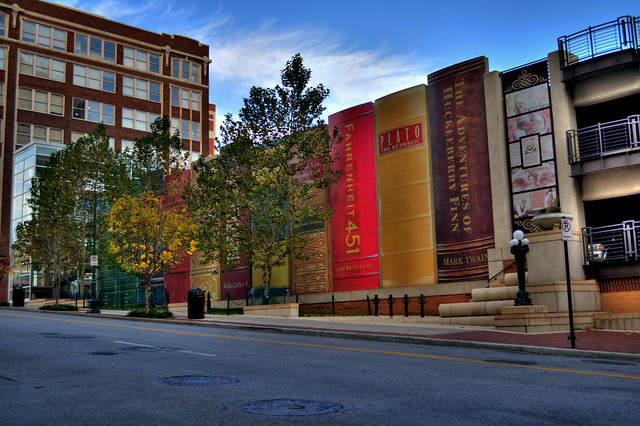I was reading about US strata corporations losing Fannie Mae and Fannie Mac approval and wondered why it was a big deal. So, I investigated it more and found out some fascinating things about the drivers of the medium and high density real estate sector in the US.
The story goes something like this. And, sorry, it’s a long story.
In the USA the residential real estate mortgage market works a bit differently to Australia. Apart from the mainstream banks who provide mortgage finance there are organisations like Fannie Mae and Fredie Mac that sit behind banks and underpin residential mortgages.
GSE's Explained
So, what’s a Fannie Mae or a Freddie Mac?
Fannie Mae and Freddie Mac are government-sponsored enterprises with a mission to provide liquidity, stability and affordability to the US housing and mortgage markets and to increase the amount of funds available in order to make homeownership and rental housing more available and affordable. Fannie Mae and Freddie Mac work with mortgage bankers, brokers and other primary mortgage market partners to help ensure they have funds to lend to home buyers at affordable rates. These kinds of loans have low rates and very low down payment requirements (usually 3%) and the government guarantees those loans so the lender is protected in the event of default.
Fannie Mae, Freddie Mac and other GSEs (government sponsored enterprises) buy loans from lenders – allowing the lender to offer a low interest rate since it sells the loan (and the risk) to one of these entities.
The Federal Housing Financing Agency (FHFA) is a government agency created to regulate and oversee GSEs like Fannie Mae and Fannie Mac and to make sure the GSEs operate in a "safe and sound manner". So it reviews business practices of the GSEs and effectively sets the parameters for mortgage lending.
So when someone wants a Fannie Mae or Freddie Mac backed mortgage in a condominium or community association the condominium or community association operations must satisfy the FHFA requirements … otherwise there’s no loan at these lower rates and favourable terms.
Approval Guidelines
These requirements are detailed and complex and include things like –
- there are two or more units
- the project is 100 percent complete
- construction has been finished for at least one year
- 100 percent of the units have been sold
- no one owns more than 10 percent of the units
- the budget funding replacement reserves for capital expenditures and deferred maintenance (at 10%)
- home owners are in control of the association
- at least 50 percent of owners occupy the property
- there’s adequate hazard and liability insurance (including flood and fidelity insurance where necessary)
- less than 25 percent of the total floor area in a project is for commercial purposes
- the commercial portion of the project must homogenise with residential use
- less than 15 percent of unit owners fee payments are in arrears
- only 30% to 50%, of the units can be funded under FHFA approved lenders (with exceptions available)
- there must be a satisfactory independent budget review establishing that the budget:
- is adequate,
- includes allocations to ensure sufficient funds to maintain and preserve all amenities and features of the project
- provides for funding of replacement reserves for capital expenditures and deferred maintenance at least 10% of the budget
- provides adequate funding for insurance coverage and deductibles
In some cases a reserve study may also be required.
And, FHFA approvals expire after a period of time so also need renewal.
Unsurprisingly, many of the current operational and management practices in US condominium and community association exist to satisfy FHFA approval, rather than because of legislative requirements or simple market forces between managers and owners.
Current Issues & Developments
In the past strata corporations viewed FHFA financing negatively. But declining real estate values and the banking crisis has eliminated many options from conventional lenders who will not finance properties if the loan is not acceptable to the secondary market (Fannie Mae, Freddie Mac and the like).
So today, Fannie Mae or Freddie Mac approval may bring more buyers for units
because financing will be more readily available. Additionally, the increased marketability of those units currently for sale in a Fannie Mae or Freddie Mac approved project not only helps the current sellers, but also serves to increase the value of all units in the condominium. This will not only help owners currently looking to sell or refinance, but will also help those unit owners who may wish to sell or refinance their units in the future.
The November 2009 guidelines temporarily increased the number of permitted FHA insured loans in a particular project from 30% to 50%. 100% of the loans can be FHA insured if the project meets all of the basic condominium standards and the additional items.
Fannie Mae recently auctioned close to 100 South Florida properties. Those properties were only offered to owner-occupants (individuals and families who plan to live in the homes), not investors, in an effort to stabilize neighborhoods severely impacted by foreclosures.
There are some obvious benefits to GSE financing and some obvious detriments. One benefit is flexibility - government backing allows Fannie Mae to offer hardship relief to home/unit owners. For example, Fannie has the ability to offer loan forbearance to mortgagors plagued with chinese drywall (allowing them to skip 6 months principal payments so owners can catch up other financial obligations.
See you at the next Fannie Mae mortgagee sale.
Francesco …






















